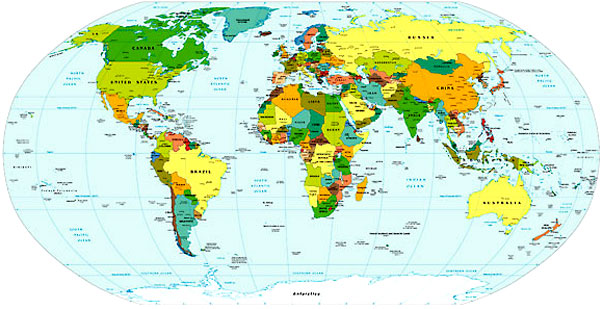 Tiny, remote Easter Island. Population? Under 4000. Small for a country that seems so famous to me—it’s the Moai statues scattered around the island. Who could forget them? And this entry is a strange one to me—on 9 September Easter Island takes the day off. What’s the anniversary? Well, it’s Policarpo Toro Day—or Annexation Day. In 1888 Easter Island was annexed to Chile. It’s mainly strange because, while there are plenty of other territories that are still under annexation, it’s the only Annexation Day I’ve come across. Most of the island is part of the Rapa Nui National Park, a world heritage site. Oh, and while annexed to Chile, the Rapanui people were confined to a settlement while the Williamson-Balfour Company rented the rest of the island for a sheep farm until 1953, and the Rapanui weren’t made Chilean citizens until 1966.
Tiny, remote Easter Island. Population? Under 4000. Small for a country that seems so famous to me—it’s the Moai statues scattered around the island. Who could forget them? And this entry is a strange one to me—on 9 September Easter Island takes the day off. What’s the anniversary? Well, it’s Policarpo Toro Day—or Annexation Day. In 1888 Easter Island was annexed to Chile. It’s mainly strange because, while there are plenty of other territories that are still under annexation, it’s the only Annexation Day I’ve come across. Most of the island is part of the Rapa Nui National Park, a world heritage site. Oh, and while annexed to Chile, the Rapanui people were confined to a settlement while the Williamson-Balfour Company rented the rest of the island for a sheep farm until 1953, and the Rapanui weren’t made Chilean citizens until 1966. The name Easter Island comes via the first European explorer—Jacob Roggeveen (yes, in case the name didn’t tip you off, he is Dutch) came upon the island on Easter Sunday in 1722. Polynesians (and they are still currently more than half the population) currently call the island Rapa Nui or Big Rapa—there is debate about the islands “original” name. The suggestion I like? Mata-ki-Te-rangi, which translates as “Eyes that talk to the sky.”
 And yes, when I opened with isolated, I mean isolated. Thousands of kilometres from Chile—and thousands of kilometres from Pitcairn island. When you’re measuring closeness to something by Pitcairn, we’re talking remote. But for a remote island its been through a lot—famines, civil war, eco-crisis… In the 19th century Peruvian slave raiders came and abducted people, violently. When some managed to escape Peru and come home, they brought smallpox. Clan wars didn’t help out. Nor did the first Christian missionary—to round out the smallpox from Peru, Eugène Eyraud brought tuberculosis with him.
And yes, when I opened with isolated, I mean isolated. Thousands of kilometres from Chile—and thousands of kilometres from Pitcairn island. When you’re measuring closeness to something by Pitcairn, we’re talking remote. But for a remote island its been through a lot—famines, civil war, eco-crisis… In the 19th century Peruvian slave raiders came and abducted people, violently. When some managed to escape Peru and come home, they brought smallpox. Clan wars didn’t help out. Nor did the first Christian missionary—to round out the smallpox from Peru, Eugène Eyraud brought tuberculosis with him. And the Moai? Well I read that it would have taken a team of half a dozen men about a year to complete one. There are 887 known moais… That’s a lot of manpower. When Europeans first visited—and recorded what they saw—the statues were facing inland, over their clan lands—when clan wars erupted, most of the statues were cast down. Some have been re-erected in the last century.
I should also mention that annexation day isn’t the most important celebration of Easter Island’s culture: there is an annual cultural festival known as Tapati that began in 1975 which takes place for a few weeks around February.
Given my pause over the holiday in memory of annexation, I suppose it is a little strange that I have chosen a poem by the Chilean poet Pablo Neruda—and yet, I would have had trouble choosing another poem. I found it online here.
The Separate Rose (Easter Island, 1973)
II: THE MEN
The truth of my prologue is this: Down with sleazy romanticists!
with experts in the ineffable!
I’m just like the others: the Colombian lady-professor,
the Philadelphian Rotarian, the drummer
from Paysandú who cashed in a bundle
to get here. In a mishmash of languages, by dissimilar routes we all come upon: Silence.
VII: THE ISLAND
When the colossuses multiplied,
walked upright into their own,
peopled the island with stone noses
and lived to beget their descendants: children
of lava and wind, grandsons
of ashes and air, great footsteps
were heard in the island:
the hands of the wind,
the criminal cyclone,
Oceania’s persistency
never worked with such fury.
The tremendous, pure heads,
long in the neck and lugubrious,
with jawbones of giants, erect
in the pride of their solitude -
those presences,
preoccupied,
arrogant presences.
O lone, pensive dignitaries –
who would ever presume, who would dare to come close
with their questions, or challenge
those questioning images?
They are the spawn of those askers
who exceeded the narrow constraints
of the island, moved out, from its minimal waist
towards the whole of an ocean –
to the human beginnings of things, and their absences.
Some of the bodies will never assume their full stature,
their arms shapelessly locked
into craters, asleep:
bedded down in calcareous rose,
never lifting their eyes to the sea,
sleeping the leviathan’s horizontal sleep,
stone larvae of mystery,
they lie now as when flung by the wind when it fled from that country
and the breed of the children of lava was over.
—Pablo Neruda
translated from the Spanish by Bill Belitt


No comments:
Post a Comment